Combining agriculture with experiential tourism
Known as the “fruit capital” of the Southeast region, Dong Nai is famous for its specialties such as rambutan, durian, mangosteen, green-skinned grapefruit... During the harvest season, the fruit-laden orchards in Xuan Bac commune, Binh Loc ward, Hang Gon ward... become attractive destinations for tourists, adding to the rich and colorful rural picture.
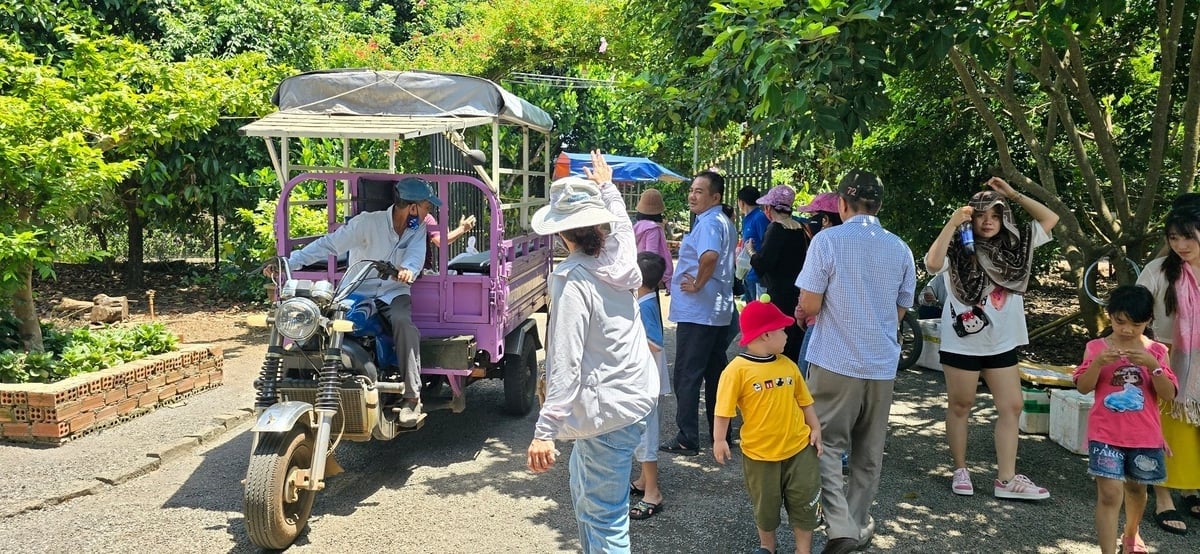
During the harvest season, the fruit-laden orchards in Xuan Bac commune, Binh Loc ward, Hang Gon ward... become attractive destinations for tourists, adding to the rich and colorful rural picture. Photo: Minh Sang.
Not only a place to visit, agricultural tourism models also create opportunities for tourists to immerse themselves in the lives of farmers, directly participating in planting, caring, harvesting and processing agricultural products. Thanks to that, the value of products is increased, at the same time creating more jobs, income and motivation for rural economic development.
One of the typical bright spots is the Suoi Cat Cacao Agricultural Service Cooperative (Suoi Cat 2 Hamlet, Xuan Loc Commune) which has successfully built the brand "Thanh Y Cacao", with many diverse product lines such as wine, wine, butter, lipstick extracted from cocoa butter, pure cocoa powder and dark, white, milk, matcha, cashew, peanut and strawberry chocolates. In particular, two products of pure cocoa powder and milk chocolate have been certified with 3-star OCOP at the provincial level, affirming the quality and standard production process.
In particular, the fermented cocoa beans of the Cooperative are evaluated by businesses from the US, Japan, Singapore and China as the best quality in Vietnam, ready to buy at high prices. The success of Suoi Cat Cacao clearly demonstrates the prestige and brand value of Dong Nai agricultural products in the international market, and at the same time demonstrates the right direction in developing deep-processed agriculture and high-quality OCOP products.
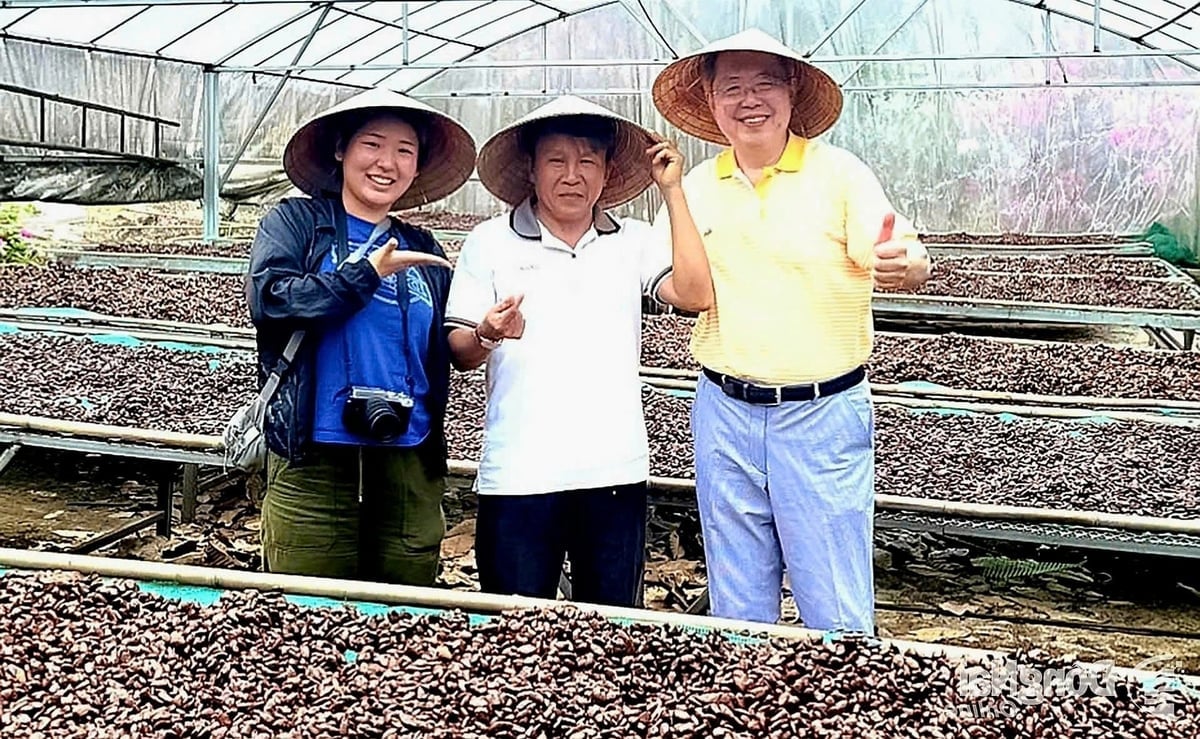
Processed cocoa products of Suoi Cat Cocoa Cooperative are evaluated by businesses from the US, Japan, Singapore and China as the best quality in Vietnam, and are willing to buy them at high prices. Photo: Hoang Phuc.
Similarly, Xuan Bac Community Tourism Village is also loved by tourists from inside and outside the province. This model connects households growing fruit trees, organizing tours to experience “a day as a farmer”, where tourists can directly pick fruit, enjoy it in the garden and participate in outdoor activities and practical labor. Mr. Van Thanh Toan, Head of Xuan Bac Tourism Cooperative Group shared: “Tourists coming to Xuan Bac not only visit but also immerse themselves in the life of farmers, enjoy the peaceful atmosphere and the sweetness of homegrown fruit”.
Along with agricultural tourism, Dong Nai also owns many unique eco-tourism products. A typical example is Bu Gia Map National Park Eco-tourism Area, which was recently recognized as meeting 3-star OCOP standards in May 2025.
Located in the border area of the Central Highlands, Bu Gia Map is the “green lung” of the area, where visitors can trek through the forest, camp overnight, and explore the rich ecosystem with many rare species of animals and plants. Visitors can also participate in brocade weaving, basket weaving, cooking bamboo rice, enjoying wine, gong exchange and especially the soup, one of 121 typical dishes of Vietnam.

Bu Gia Map National Park Ecotourism Area, newly recognized as meeting 3-star OCOP standards in May 2025. Photo: Hoang Phuc.
These activities not only help promote the natural image of Dong Nai but also spread the cultural values of the indigenous people, contributing to the development of sustainable ecotourism. This is not only an important milestone in the program "One Commune One Product" but also contributes to raising the value of agricultural products, promoting the rural economy in a sustainable direction, linking agriculture with experiential tourism.
Connecting tourism and OCOP for "double efficiency"
Dong Nai is moving towards an experiential tourism model combining OCOP product consumption, creating a natural consumption channel, and at the same time opening up a direction for green economic development and circular economy. Especially in recent years, the green production and deep processing movement has become increasingly widespread. However, for OCOP to develop sustainably, the core factor is not only product quality but also the expansion of a stable consumption market.
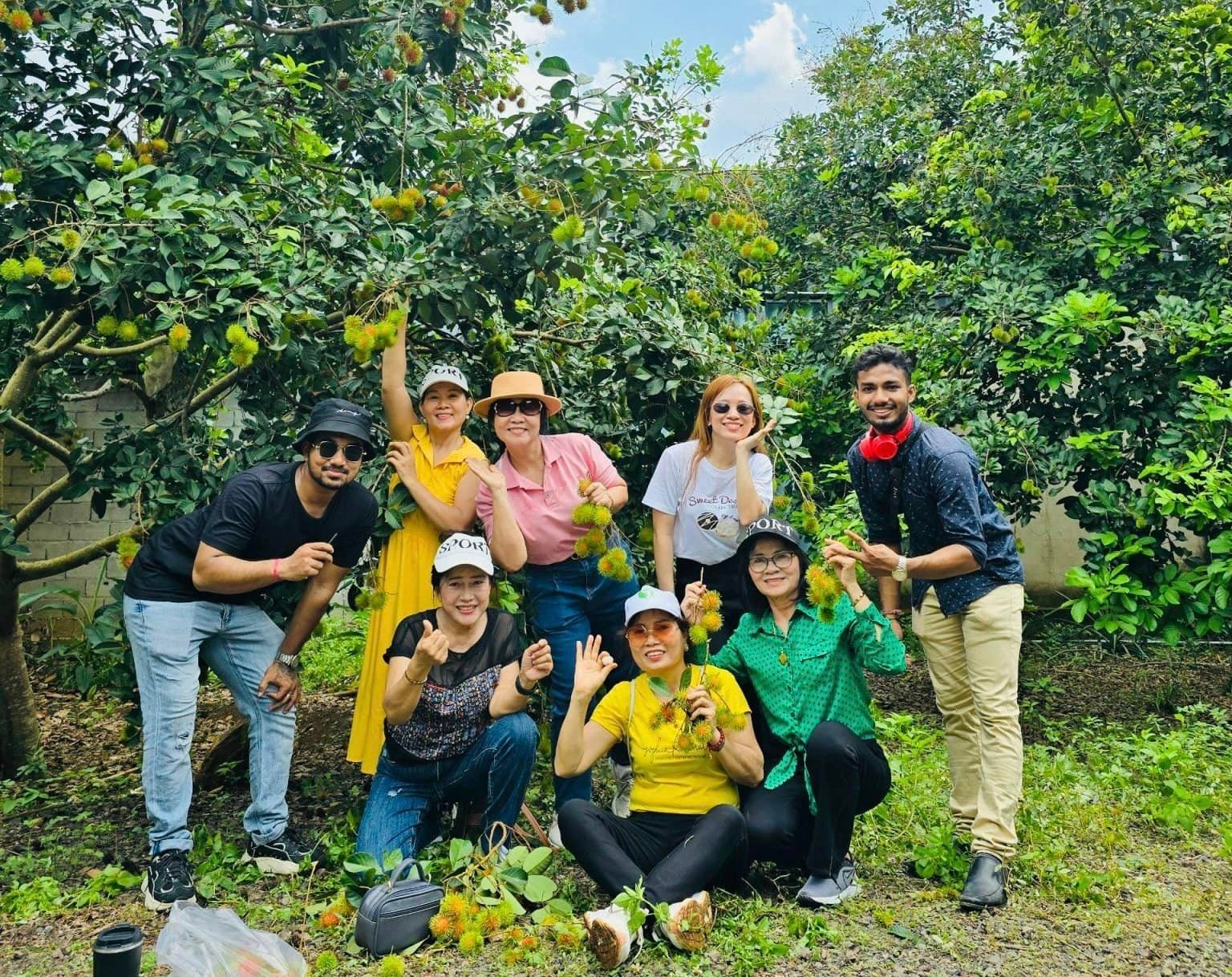
Dong Nai is moving towards an experiential tourism model combined with the consumption of OCOP products, creating a natural consumption channel while opening up a direction for green economic development and circular economy. Photo: Minh Sang.
According to experts, linking tourism with the consumption of OCOP products helps promote agricultural brands, creating unique features for each destination. When tourists witness the production process and enjoy the products on the spot, they are willing to buy them as gifts, creating a consumption flow associated with cultural and local experiences.
Starting her business 4 years ago with only raw honey products, Ms. Vu Thi Thanh Thuy, Director of Vang Anh Honey Facility (An Vien Commune, Dong Nai) has applied modern processing technology to create a diverse and environmentally friendly honey product line. Currently, the facility has 9 products, of which 5 products have achieved 3-star OCOP and 1 pre-OCOP product, including raw honey, male papaya flowers, freeze-dried ginger jam, honey and ginger and fresh turmeric soaked in honey.
Ms. Vu Thi Thanh Thuy shared: “Thanks to the combination of experiential tourism models and products applying new technology in preservation and processing, it has quickly been accepted by the market, creating motivation for me to expand more OCOP products every year. We aim not only to export products but also to promote the image of clean, creative agricultural products and bring Vietnamese identity to friends around the world.”
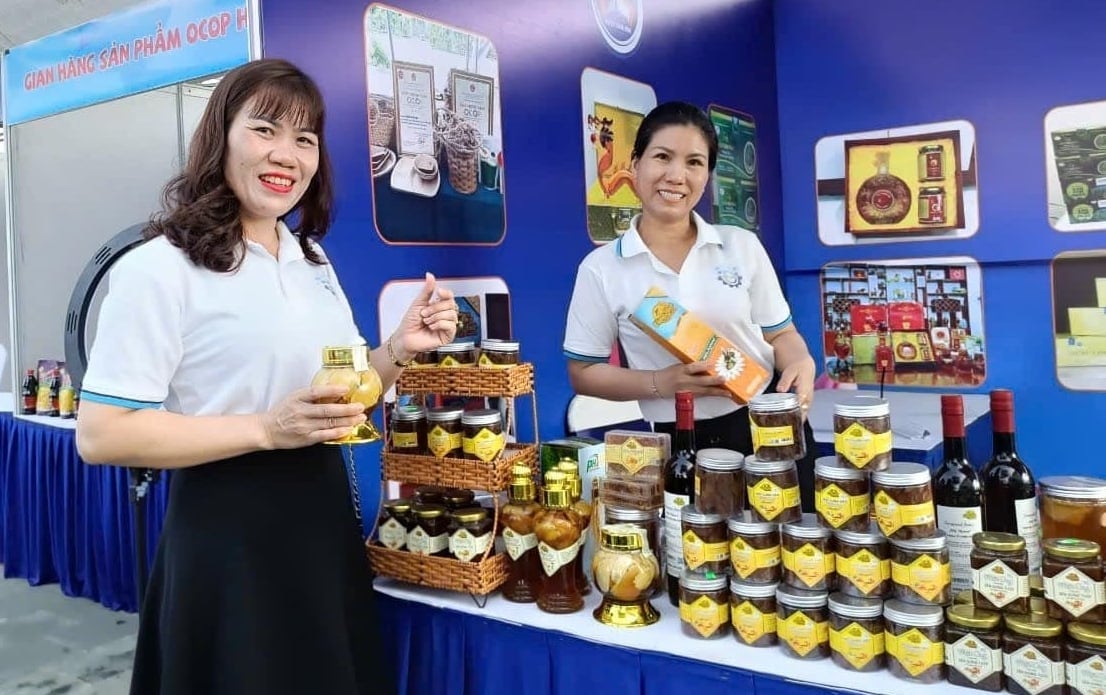
Vang Anh Honey Facility (An Vien Commune, Dong Nai) aims to not only export products but also promote the image of clean, creative agricultural products and bring Vietnamese identity to friends around the world. Photo: Minh Sang.
Notably, not only stopping at the domestic market, the Vang Anh Honey brand has initially exported to the Korean market, affirming the far-reaching potential of Dong Nai OCOP products.
Ms. Le Thi Anh Tuyet, Deputy Director of the Department of Agriculture and Environment of Dong Nai province shared: “Currently, Dong Nai has many outstanding tourist areas such as Long Khanh, Vinh Cuu, Xuan Loc, Tan Phu, Dinh Quan… attracting 3-4 million visitors each year. If only half of them choose to buy OCOP products or craft village products, the revenue will be huge, contributing to increasing the value of agricultural products and promoting domestic consumption”.
The connection between tourism and OCOP is bringing "double effect" for the tourism industry with more unique products to attract tourists, while agriculture has a sustainable consumption and promotion channel. Traditional craft villages also have the opportunity to expand their markets, forming a value chain from production to experience and consumption.
Ms. Le Thi Ngoc Loan, Director of the Department of Culture, Sports and Tourism of Dong Nai, said: “The province’s 3-star OCOP tourism products mainly focus on two groups: community agricultural tourism and forest ecotourism combined with indigenous ethnic culture. This is a model that makes good use of natural advantages, both effectively exploiting resources and enhancing the value of agricultural products and regional identity.”
According to Ms. Loan, in the coming time, the Department will continue to survey and support localities in building and upgrading OCOP products, especially the group of eco-agricultural-cultural tourism products, aiming to make Dong Nai a typical destination of the Southeast region, where tourism is closely linked to agricultural production and environmental conservation.
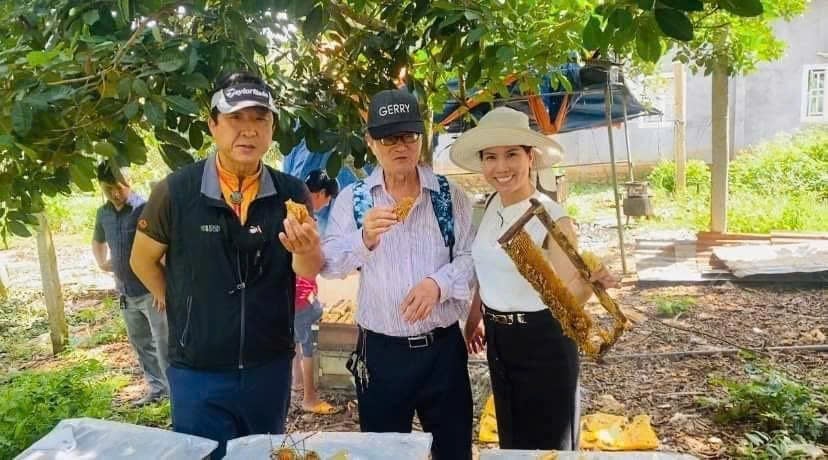
Thanks to the combination of experiential tourism model and products applying new technology in preservation and processing, OCOP products of Vang Anh Honey Facility are quickly welcomed by the market. Photo: Minh Sang.
From fruit-laden orchards to vast primeval forests, OCOP tourism products are becoming a bridge between agriculture and tourism, demonstrating Dong Nai's right direction in building a green economy, ecological agriculture and sustainable new rural areas.
According to the Department of Culture, Sports and Tourism of Dong Nai, the development of 3-star OCOP tourism products not only helps promote the image of a green and friendly Dong Nai, but also contributes to diversifying livelihoods, increasing income for rural people, and promoting the One Commune One Product Program to become more effective and practical.
Source: https://nongnghiepmoitruong.vn/buoc-chuyen-ocop-dong-nai-bai-3-gan-du-lich-voi-tieu-thu-san-pham-ocop-d782988.html














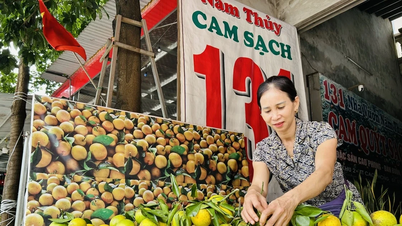




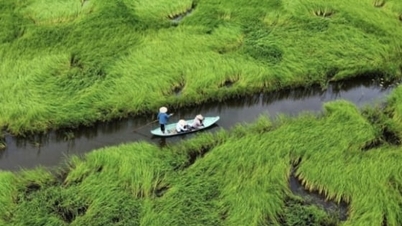


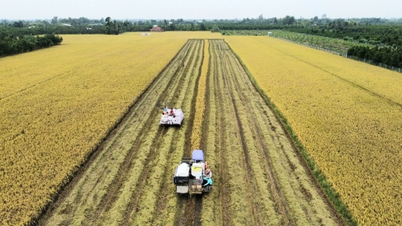


![The person who 'broke the fence' for Dat Cang's agriculture: [Part 2] Preserving the value of Doan Xa land](https://vphoto.vietnam.vn/thumb/402x226/vietnam/resource/IMAGE/2025/11/10/1762727497156_2926-nguoi-xe-rao-mo-loi-cho-san-xuat-nong-nghiep-dat-cang-165925_730.jpeg)





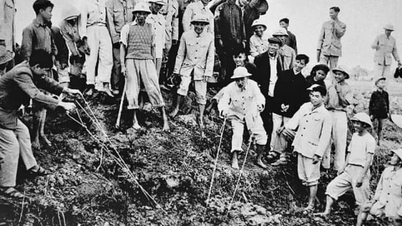
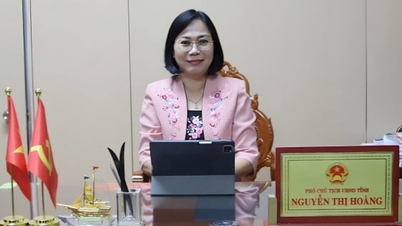


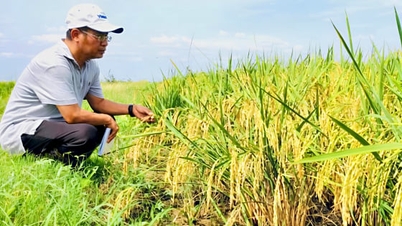



















































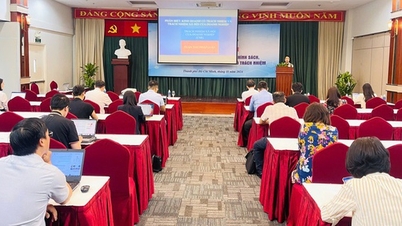



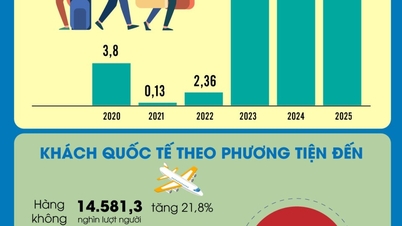

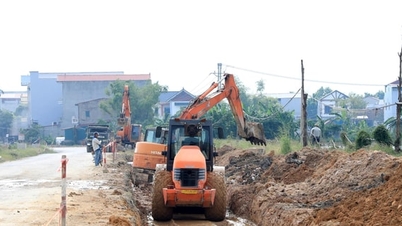

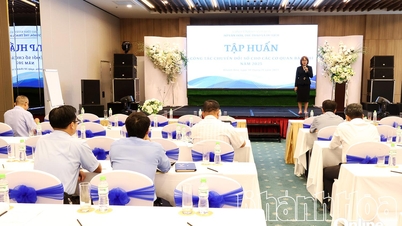
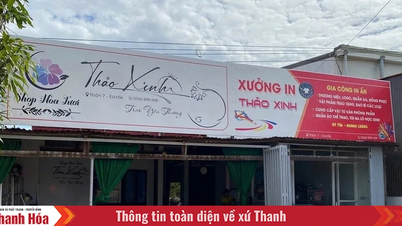


![Dong Nai OCOP transition: [Article 3] Linking tourism with OCOP product consumption](https://vphoto.vietnam.vn/thumb/402x226/vietnam/resource/IMAGE/2025/11/10/1762739199309_1324-2740-7_n-162543_981.jpeg)











Comment (0)